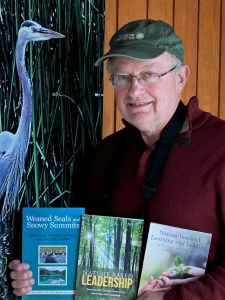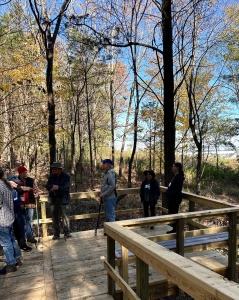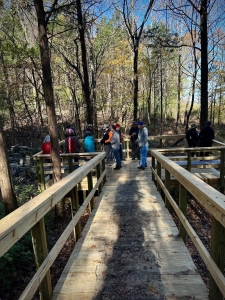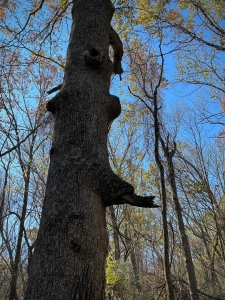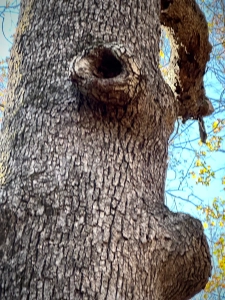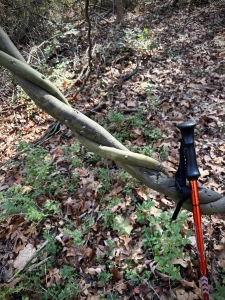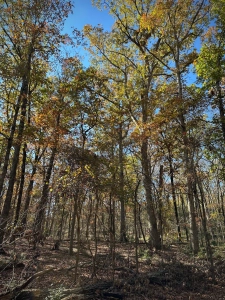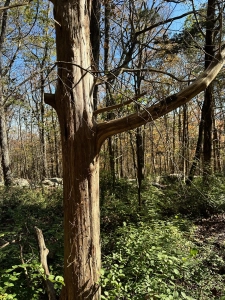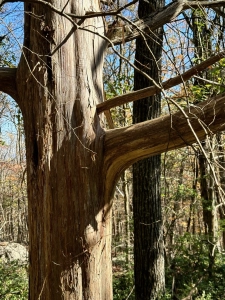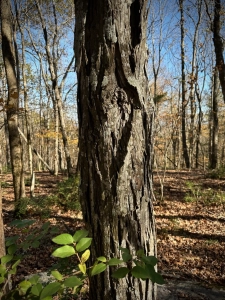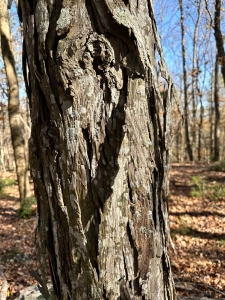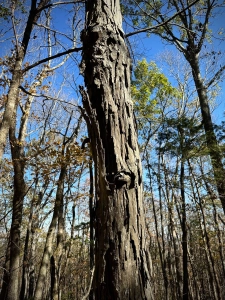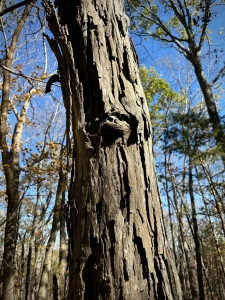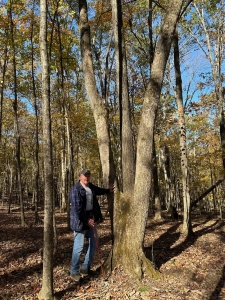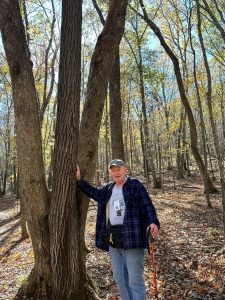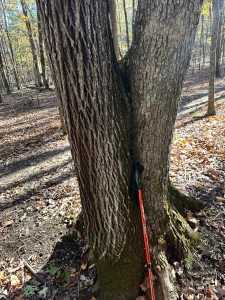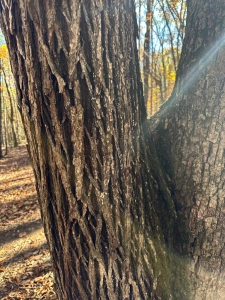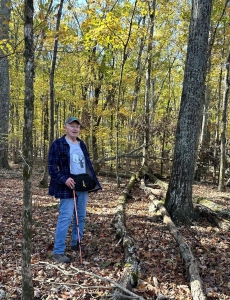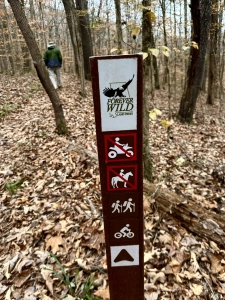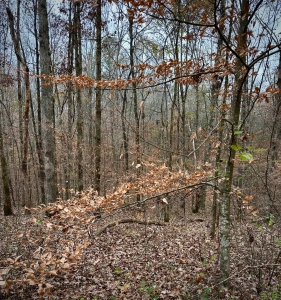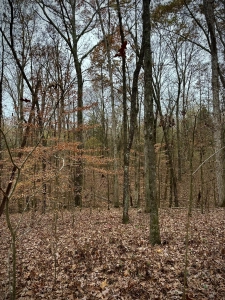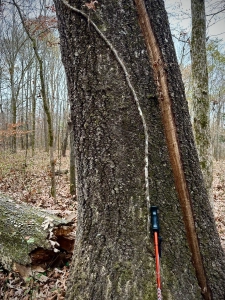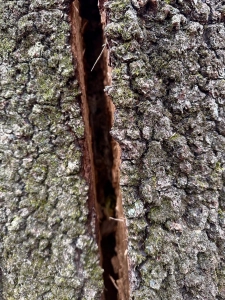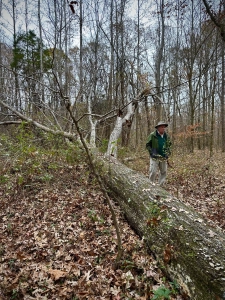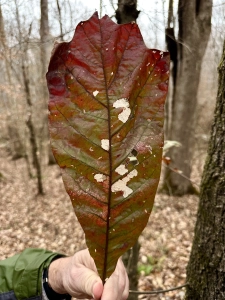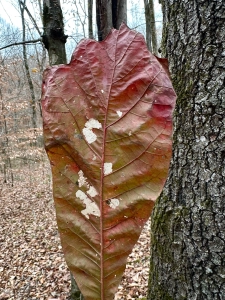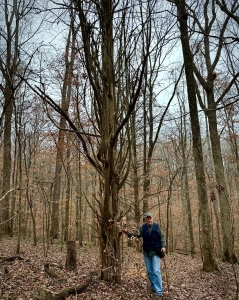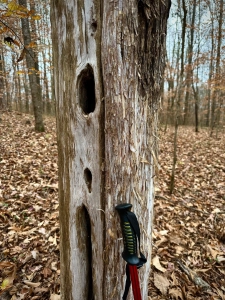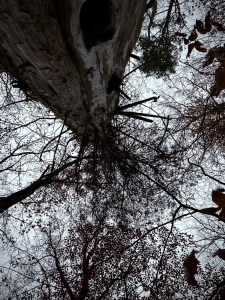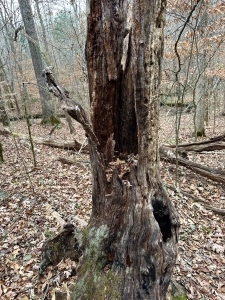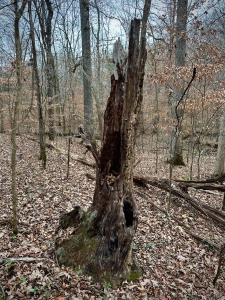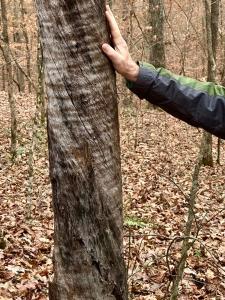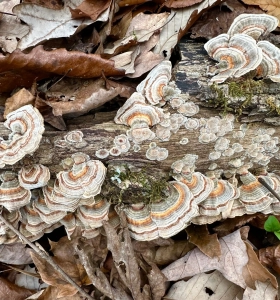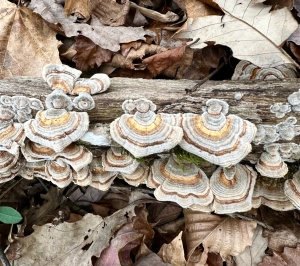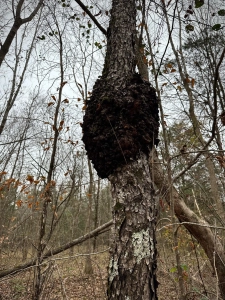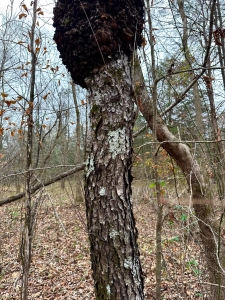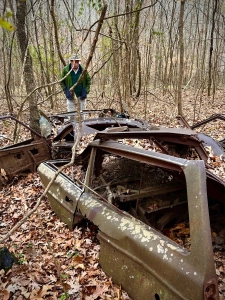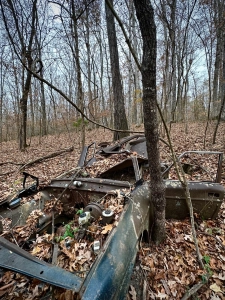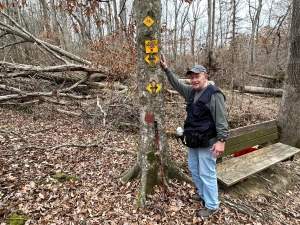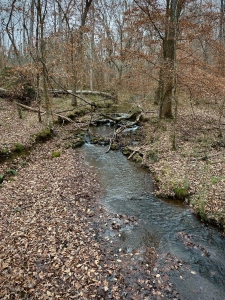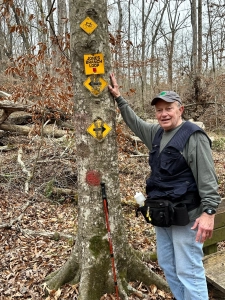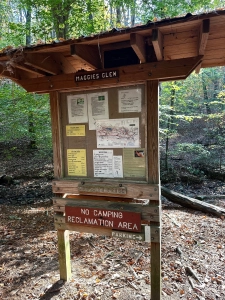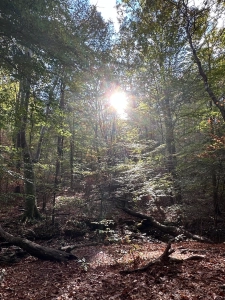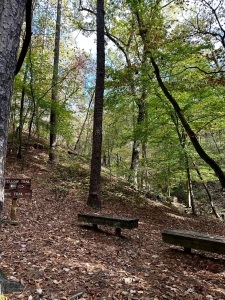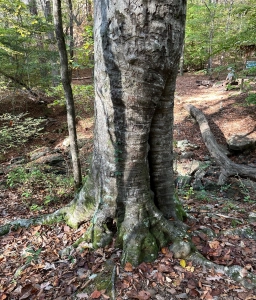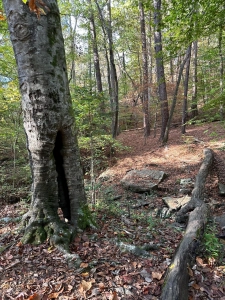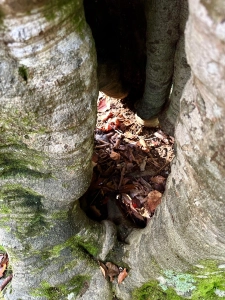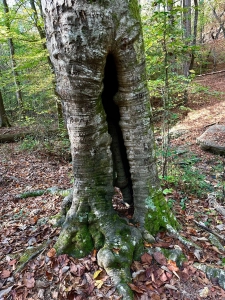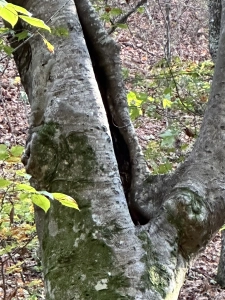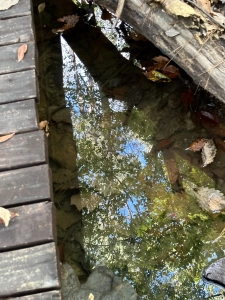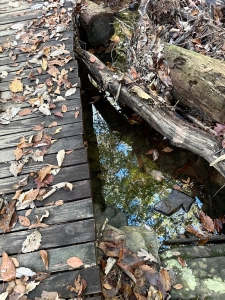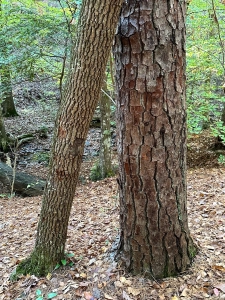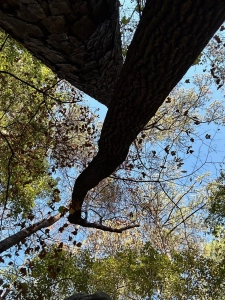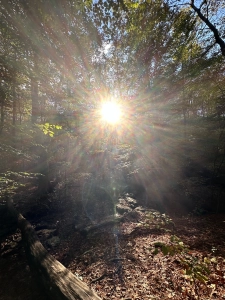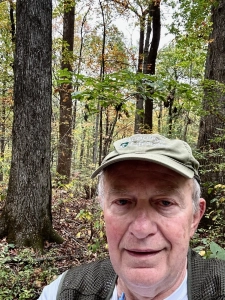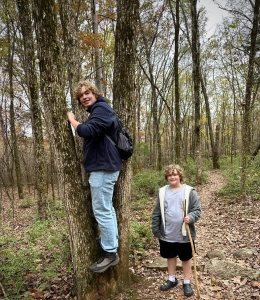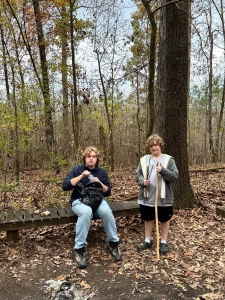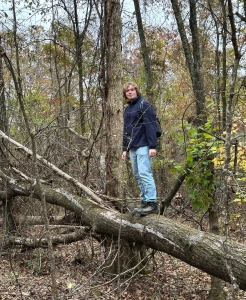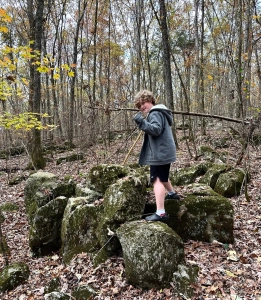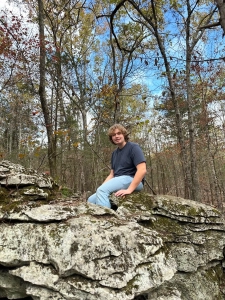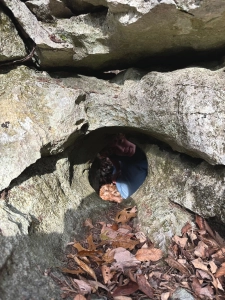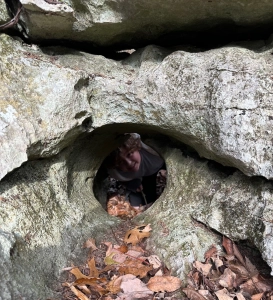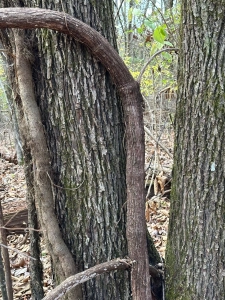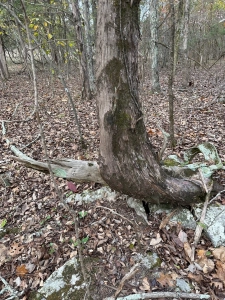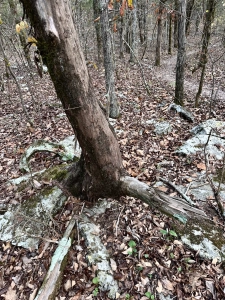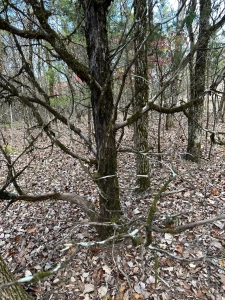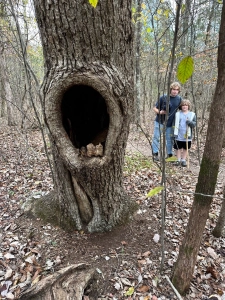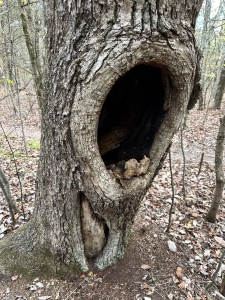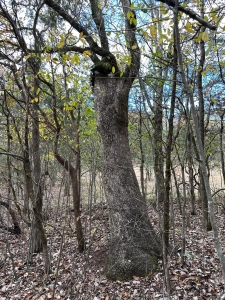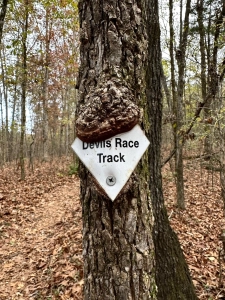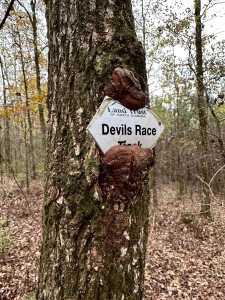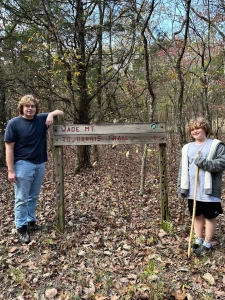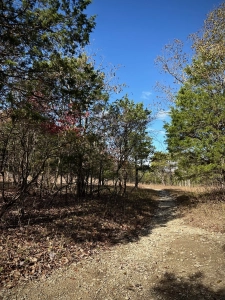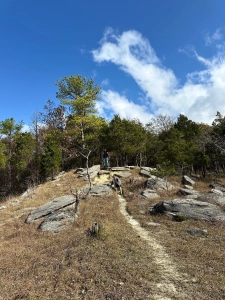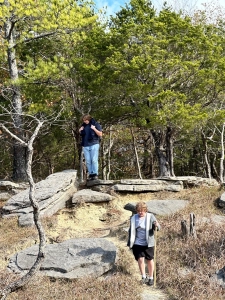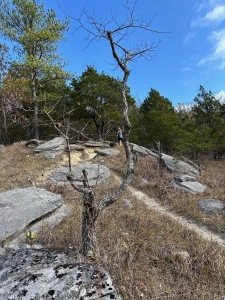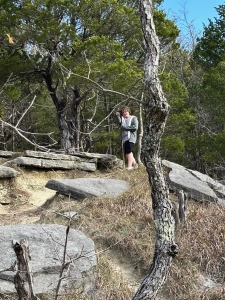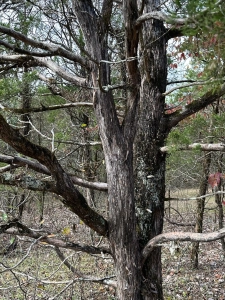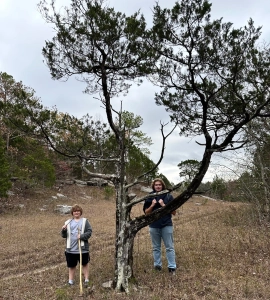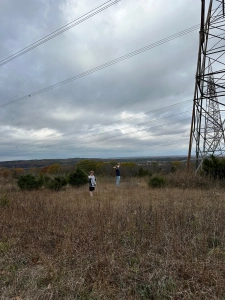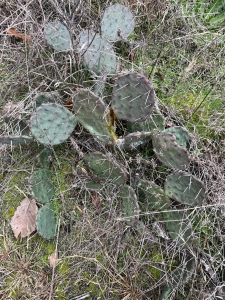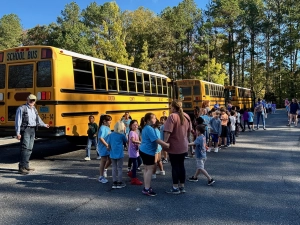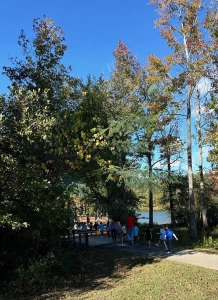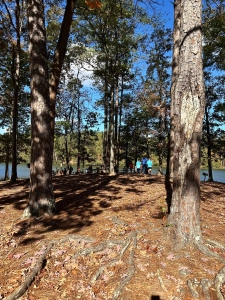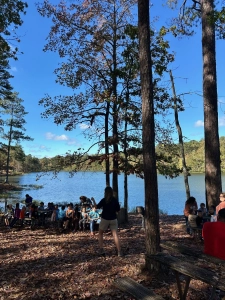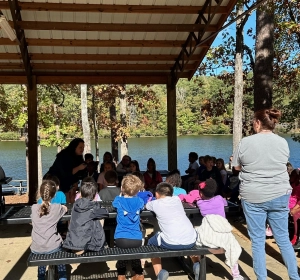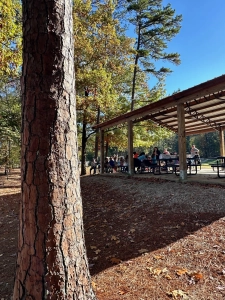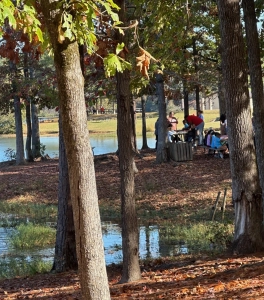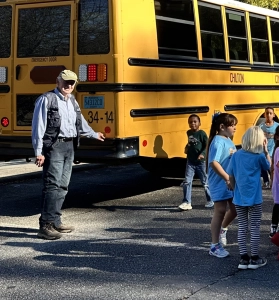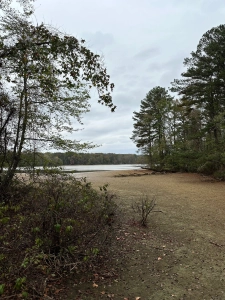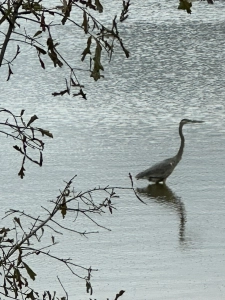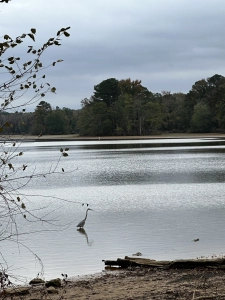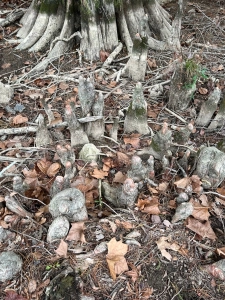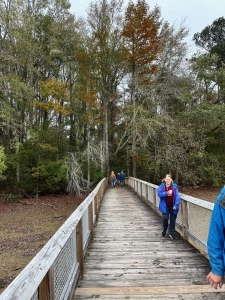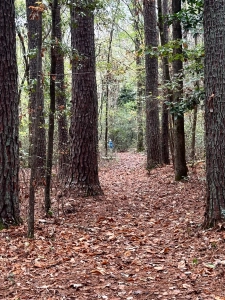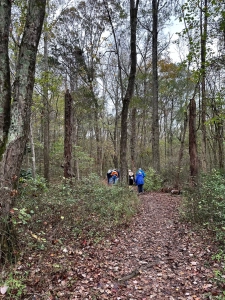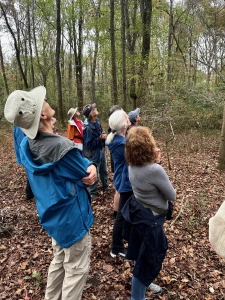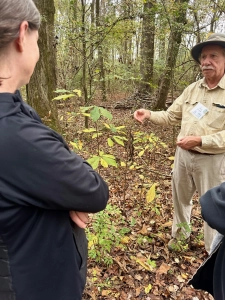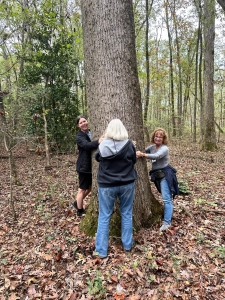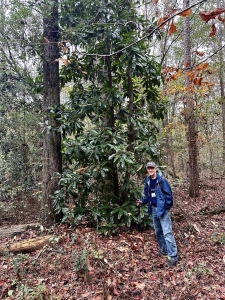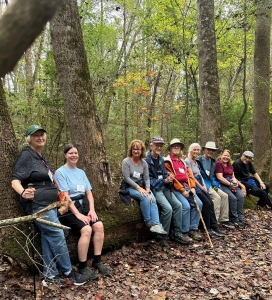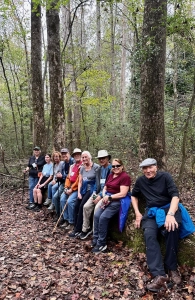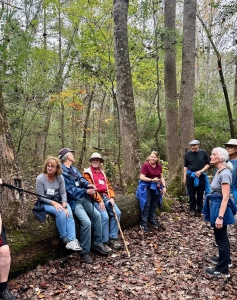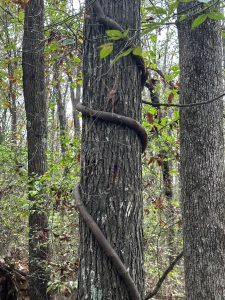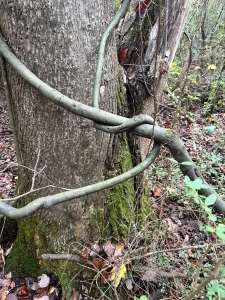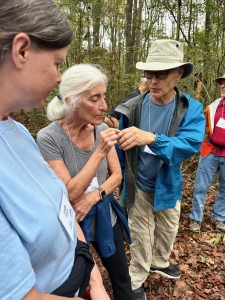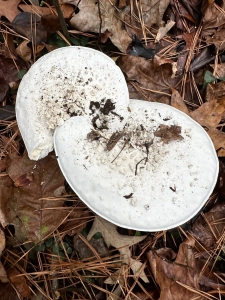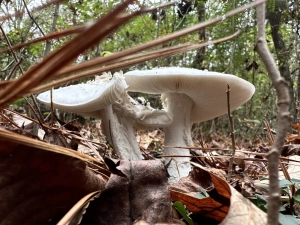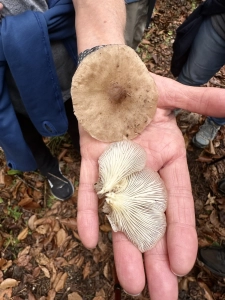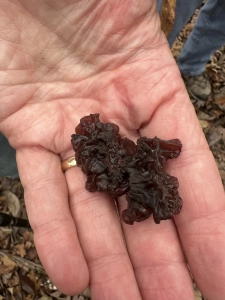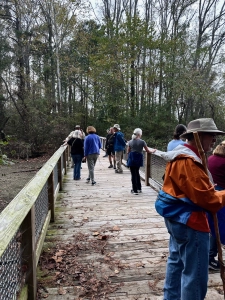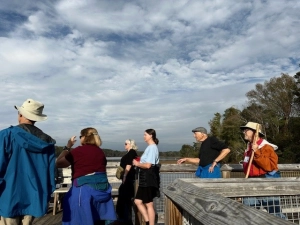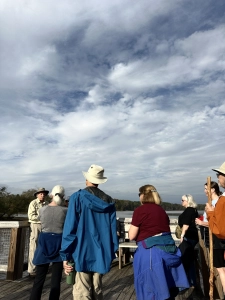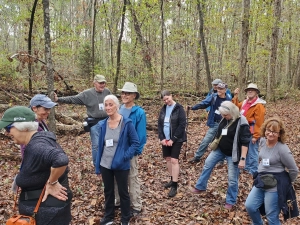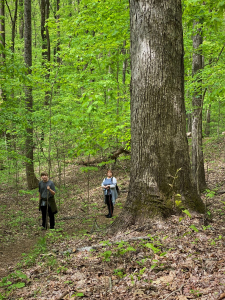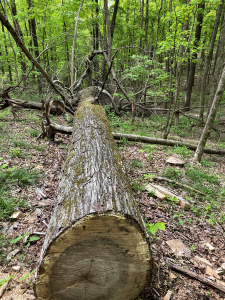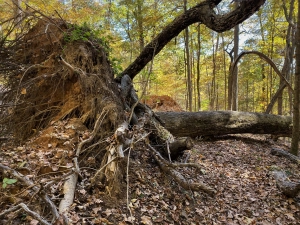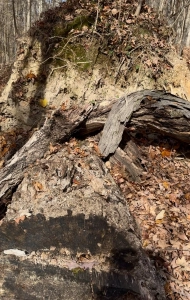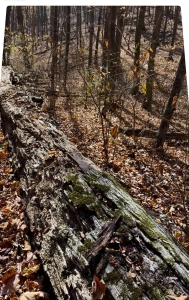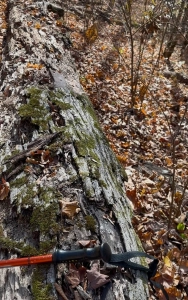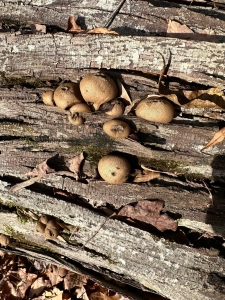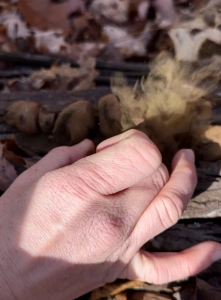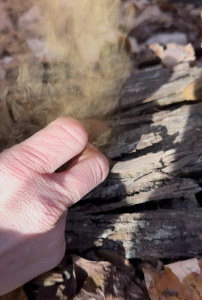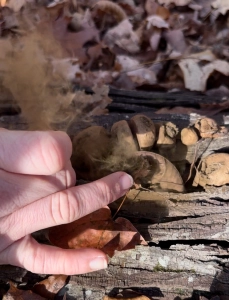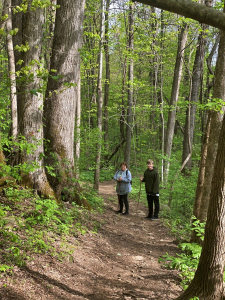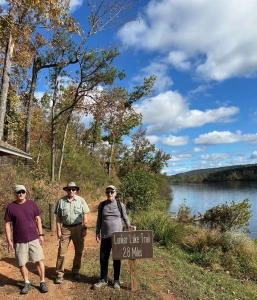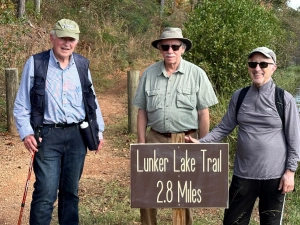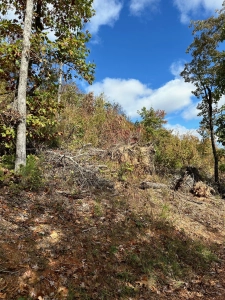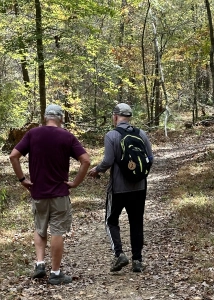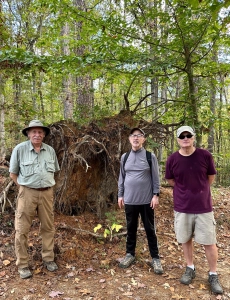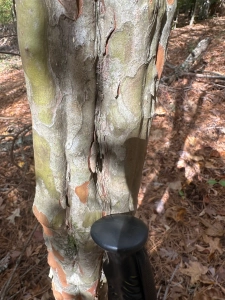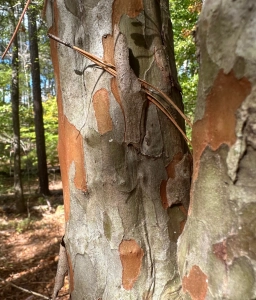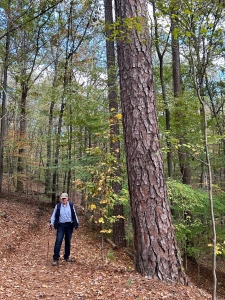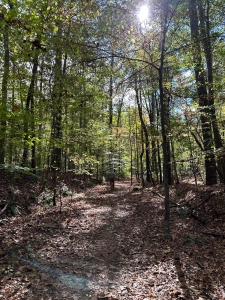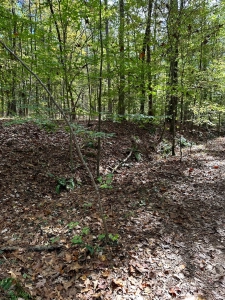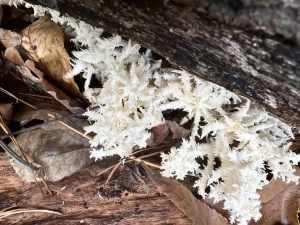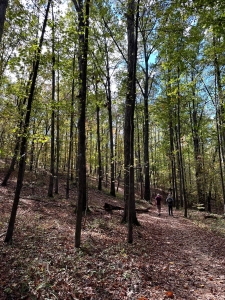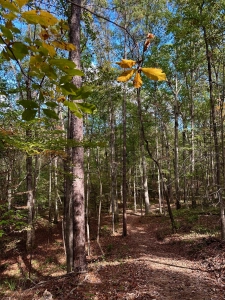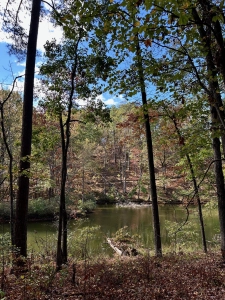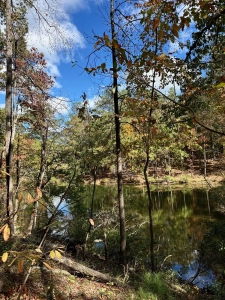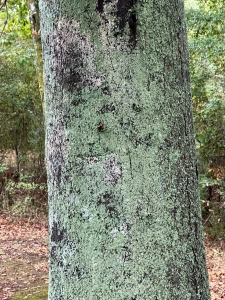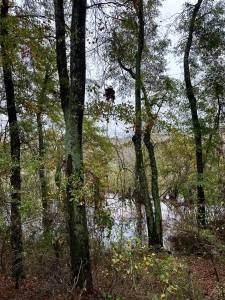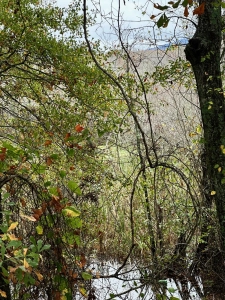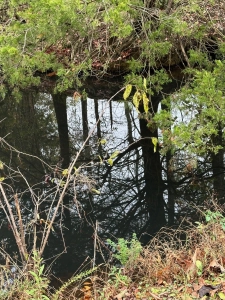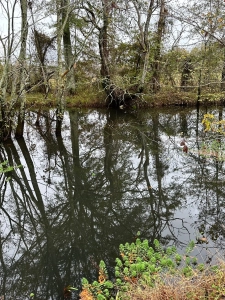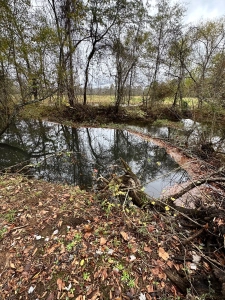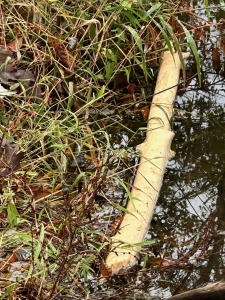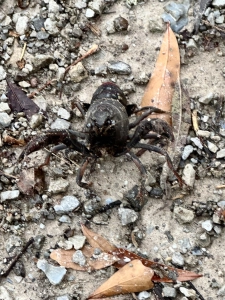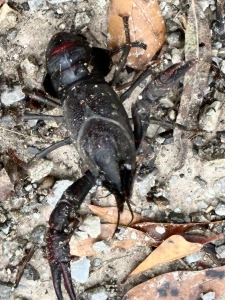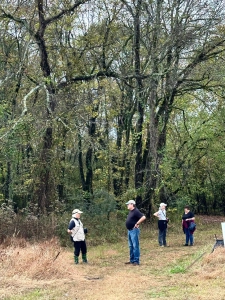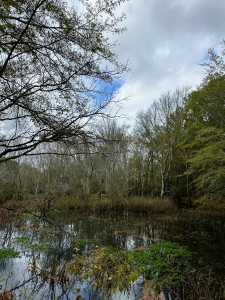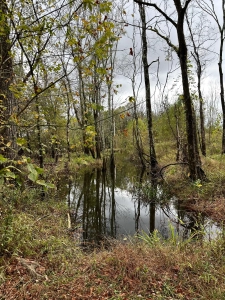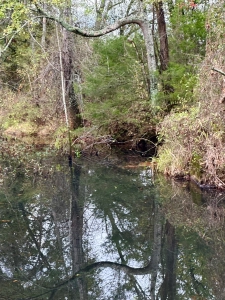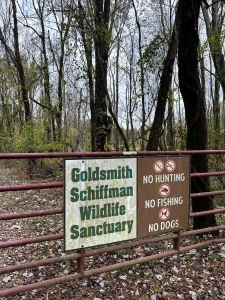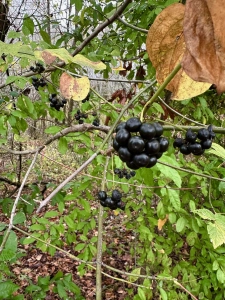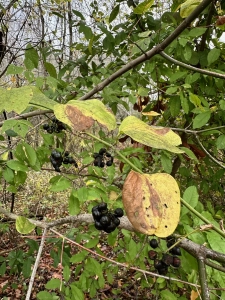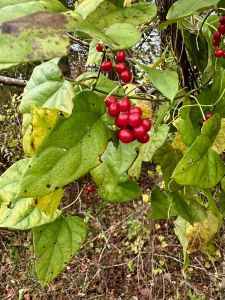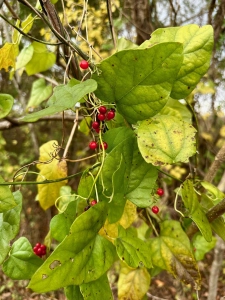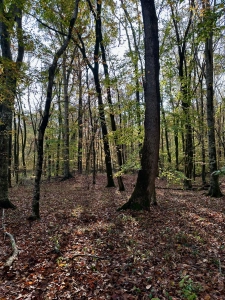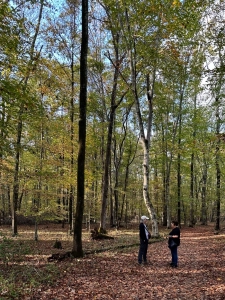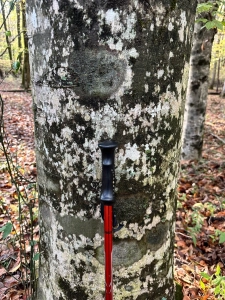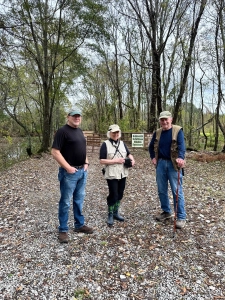A Unique Forest at Prattville, Alabama’s Wilderness (Bamboo) Park
On December 17, 2024, Judy and I visited Pratville’s Alabama’s Wilderness Park. We resided in Prattville from 1981 to early 1985, when our two children were still under ten. We visited the park occasionally during that period and decided that while in the Montgomery area, we should stop by the 30-acre preserve. Our kids are now a few weeks shy of 46 and 48. We were 40 years younger the last time we walked the trails.
A welcoming sign at the trailhead reads:
Plant life unfamiliar to most Southerners flourishes in this now protected environment. The bamboo reaches dramatic heights much like the magnificent bamboo habitats of the Panda of China… In 1940 the land was passed to Floyd Smith…the owner who placed the bamboo plants in the area. He had a love of exotic plants and acquired the bamboo shoots from a Washington Import firm.
When I lived in Prattville, I was Land Manager for Union Camp Corporation, responsible for 320,000 acres of company-owned forestland located loosely along a line from Clanton to Brewton. I loved those intensively managed forests that in part supplied wood and fiber to company mills. I recall viewing Wilderness Park as little more than a curiosity…a neat place to take the kids. I see it now as a trial…a test of transplanting a foreign biome to Alabama. The bamboo stands as a nearly impenetrable wall along the path.
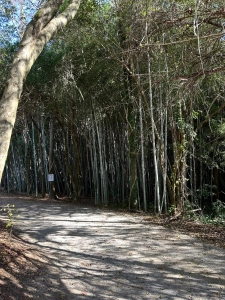 .
.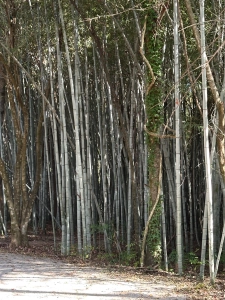
I have referred to this as a bamboo forest, but bamboo is not a tree. Instead, it is technicallya perennial evergreen grass. I’ll leave the description there, urging the curious reader to dig more deeply online.
I recorded this 59-second video within the bamboo forest:
Native tree species intermix within the dense bamboo thicket, rising 20+ feet above the tallest bamboo, which are clearly not reducing sunlight available to the super dominant loblolly pine (left) and yellow poplar (right). The battle for soil nutrients and moisture is likely intense.
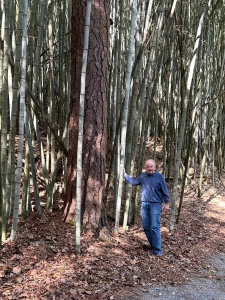
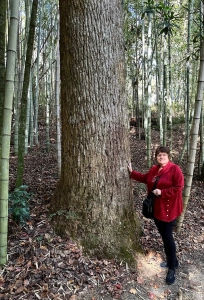
Sections of the preserve are pure bamboo.
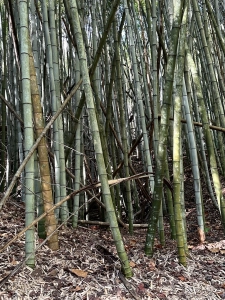
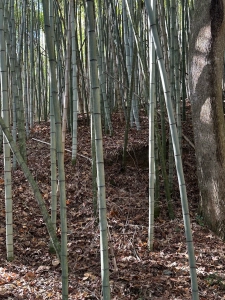
The 80 year-old mixed bamboo and native tree species plant cover effectively blocks any penetrating sunlight from the forest floor.
My 59-second video presents the bamboo forest from the trail as we approached the pond:
I admit fascination with the segmented stems, smooth surface, and straight poles. Fascinated yes, but not enthralled as I am with the myriad bark patterns and color of a diverse stand of native hardwoods.
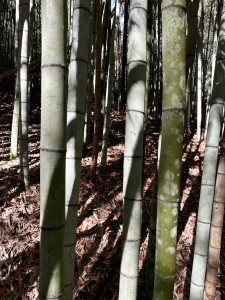
Almost invisible to my naked eye as I walked past, this white-banded fishing spider tolerated me coming close enough for a clear photo.
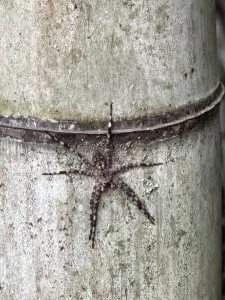
The path circuiting the bamboo pond is worn smooth and vegetation-free, exposing the adjoining hardwwod roots. Bamboo stems reflect clearly in the satin water, among the tumbled hardwood branches.

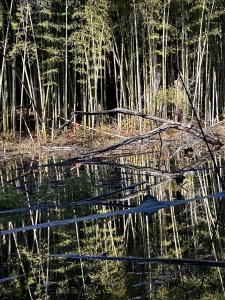
Bamboo shoots crowd the pond-berm pathway.
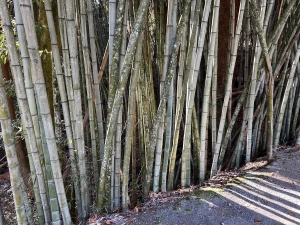
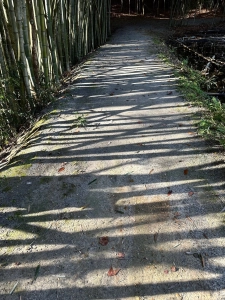
The pond welcomes full sunlight to an otherwise deeply shaded preserve. Turtles embrace the mid-December warmth
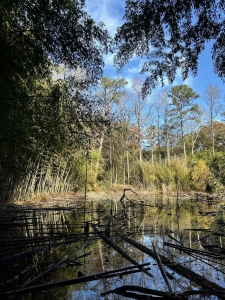
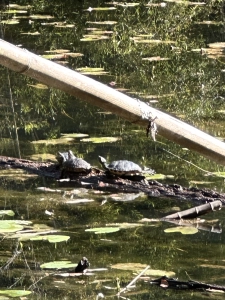
Just like the grapevines reaching into our native hardwood canopies, these hefty stalwarts extend well above the Asian bamboo.
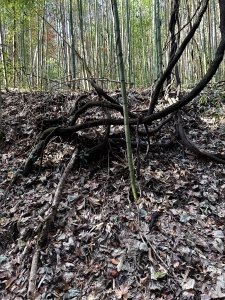
Wisteria (the bare vine at left) also reaches into the main canopy. Green English ivy leaves adorn the smaller vines that carry thick air roots (especially in the image at right).
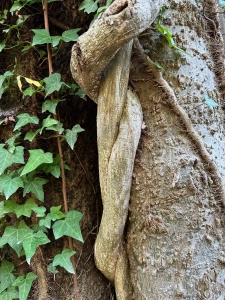

I recorded this 59-second video of a massive cord of wisteria vines lifting through the hardwood tree above the bamboo.
Another sylvan curiosity, each species of wisteria always coils in the same direction, these two spiraling upward clockwise (from the perspective of looking up from the base).
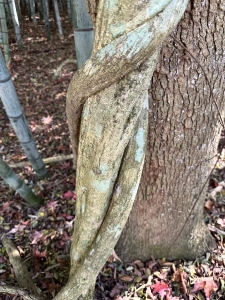
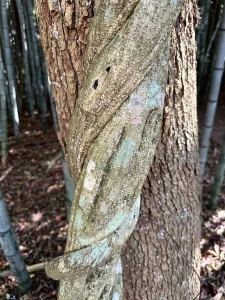
Does its spiral in Pratville reveal anything about its species identity? The answer is, yes! I devoted a May 2022 photo essay (https://stevejonesgbh.com/2022/05/25/exploring-the-spiral-nature-of-northern-alabamas-tree-vines/) to exploring the spiral nature of our northern Alabama vines. These Pratville wisteria vines are American wisteria.
Upon returning home, I learned that a diagnostic character of Japanese wisteria (Wisteria floribunda) is its counterclockwise spiraling. American wisteria spirals clockwise.
Alan S. Weakley, North Carolina based expert on southern flora, wrote this about the direction of spiral: Twining direction can be determined by looking at (or imagining) the vine twining around a branch or pole. Look at the pole or branch from the base (from the direction from which the vine is growing). If the vine is circling the branch or pole in a clockwise direction, that is dextrorse; if counterclockwise, that is sinistrorse.
So, the direction of spiral is not owing to an environmental factor; it’s genetically determined. Now the question is why the direction is hard-wired. Is there some evolutionary advantage in one way or the other deep in the genetic footprint? If so, why do Wisteria americana and frutescens twine in the opposite direction from their Asian cousin?
I hope that my waning mind can cling to the terms dextrorse (clockwise) and sinistrorse (counter clockwise).
I enter Nature embracing what I consider five essential verbs: Believe, Look, See, Feel, and Act.
-
- Believe: I find Nature’s Lessons because I know they lie hidden within view — belief enables me to look and see
- Look: Really look, with eyes open to your surroundings, external to electronic devices and the distractions of meaningless noise and data
- See: Be alert to see deeply, beyond the superficial
- Feel: See clearly, with comprehension, to find meaning and evoke feelings
- Act: Feel emphatically enough to spur action
Most hikers and recreational trekkers walk through Nature, rather than within it. I’ve seen far too many people walking blindly, focused on whatever is blaring through their earbuds, or engrossed in banal iPone conversation. Henry David Thoreau offered similar wisdom:
It’s not what you look at that matters, it’s what you see.
I am certain that Thoreau would have noticed the direction of spiral. Leonardo da Vinci would have concluded that Nature has a purpose for every subtle distinction. Life is rich with mystery, and yet for every cause, Nature steers exclusively with impetus and basis.
Thoughts and Reflections
I offer these observations:
- Although foreign species may alter our place impression, the underlying land is unchanged.
- The large intermixed native hardwoods evidence a fertile soil-site, nutrient-rich and moisture-blessed in a favorable southern clime.
- It’s not what you look at that matters, it’s what you see.
Inhale and absorb Nature’s elixir. May Nature Inspire, Inform, and Reward you!
Note: Unless otherwise noted, all blog post images are created & photographed by Stephen B. Jones.
Please circulate images with photo credit: “©2025 Steve Jones, Great Blue Heron. All Rights Reserved.”
I am available for Nature-Inspired Speaking, Writing, and Consulting — contact me at steve.jones.0524@gmail.com
A reminder of my Personal and Professional Purpose, Passion, and Cause
If only more of us viewed our precious environment through the filters I employ. If only my mission and vision could be multiplied by untold orders of magnitude:
Mission: Employ writing and speaking to educate, inspire, and enable readers and listeners to understand, appreciate, and enjoy Nature… and accept and practice Earth Stewardship.
Vision:
- People of all ages will pay greater attention to and engage more regularly with Nature… and will accept and practice informed and responsible Earth Stewardship.
- They will see their relationship to our natural world with new eyes… and understand their Earth home more clearly.
Tagline/Motto: Steve (Great Blue Heron) encourages and seeks a better tomorrow through Nature-Inspired Living!
Steve’s Four Books
I wrote my books Nature Based Leadership (2016), Nature-Inspired Learning and Leading (2017), Weaned Seals and Snowy Summits: Stories of Passion for Place and Everyday Nature (2019; co-authored with Dr. Jennifer Wilhoit), and Dutton Land & Cattle: A Land Legacy Story (2025) to encourage all citizens to recognize and appreciate that every lesson for living, learning, serving, and leading is either written indelibly in or is powerfully inspired by Nature. All four of my books present compilations of personal experiences expressing my deep passion for Nature. All four books offer observations and reflections on my relationship with the natural world… and the broader implications for society. Order any from your local indie bookstore, or find them on IndieBound or other online sources such as Amazon and LifeRich.
I began writing books and Posts for several reasons:
- I love hiking and exploring Nature
- I see images I want to (and do) capture with my trusty iPhone camera
- I enjoy explaining those images — an educator at heart
- I don’t play golf!
- I do love writing — it’s the hobby I never needed when my career consumed me
- Judy suggested my writing is in large measure my legacy to our two kids, our five grandkids, and all the unborn generations beyond
- And finally, perhaps my books and Blogs could reach beyond family and touch a few other lives… sow some seeds for the future
